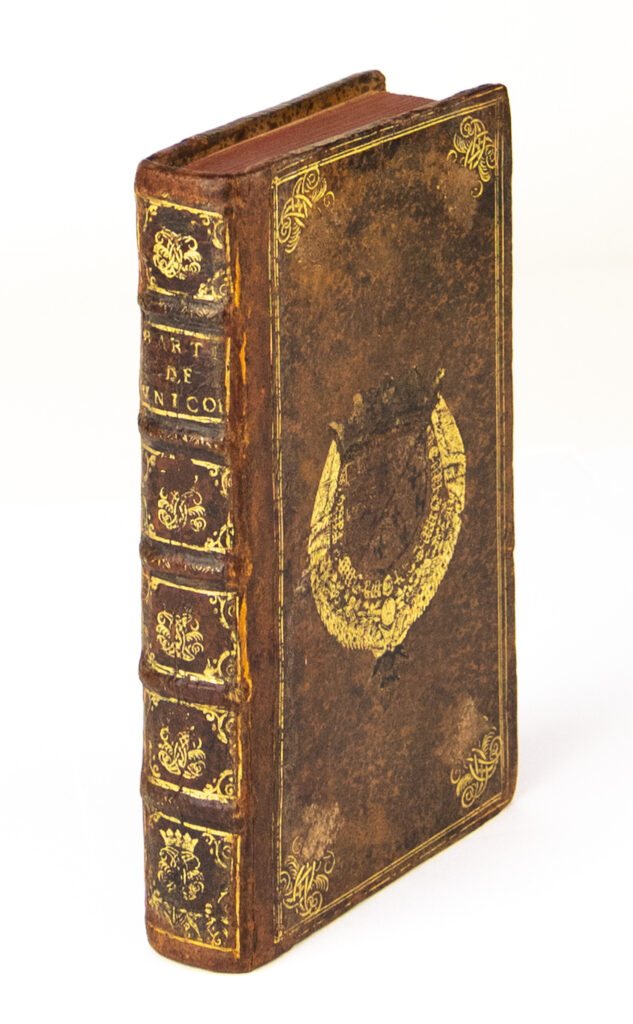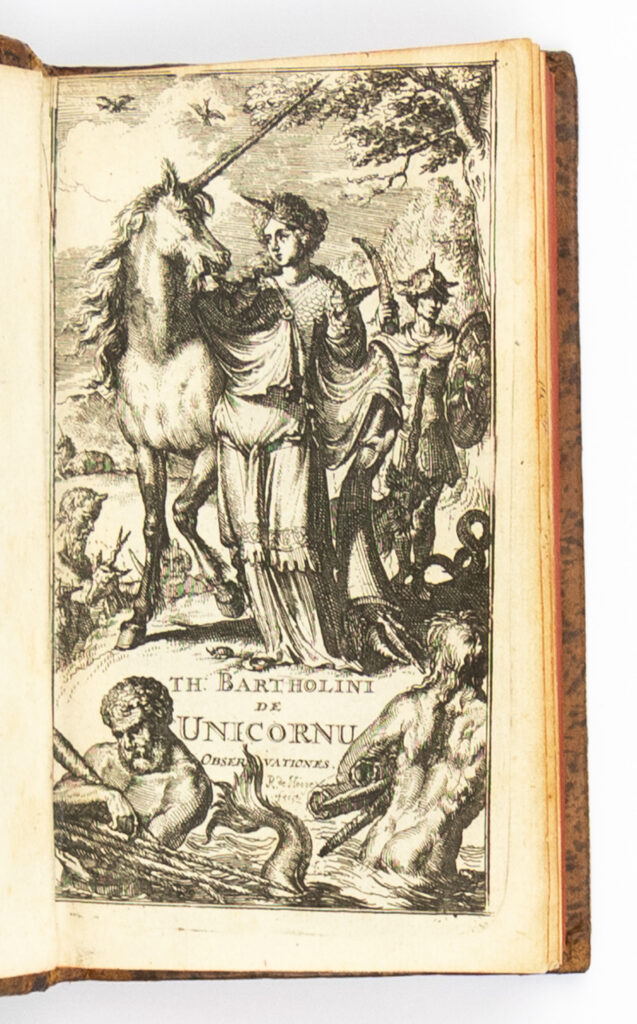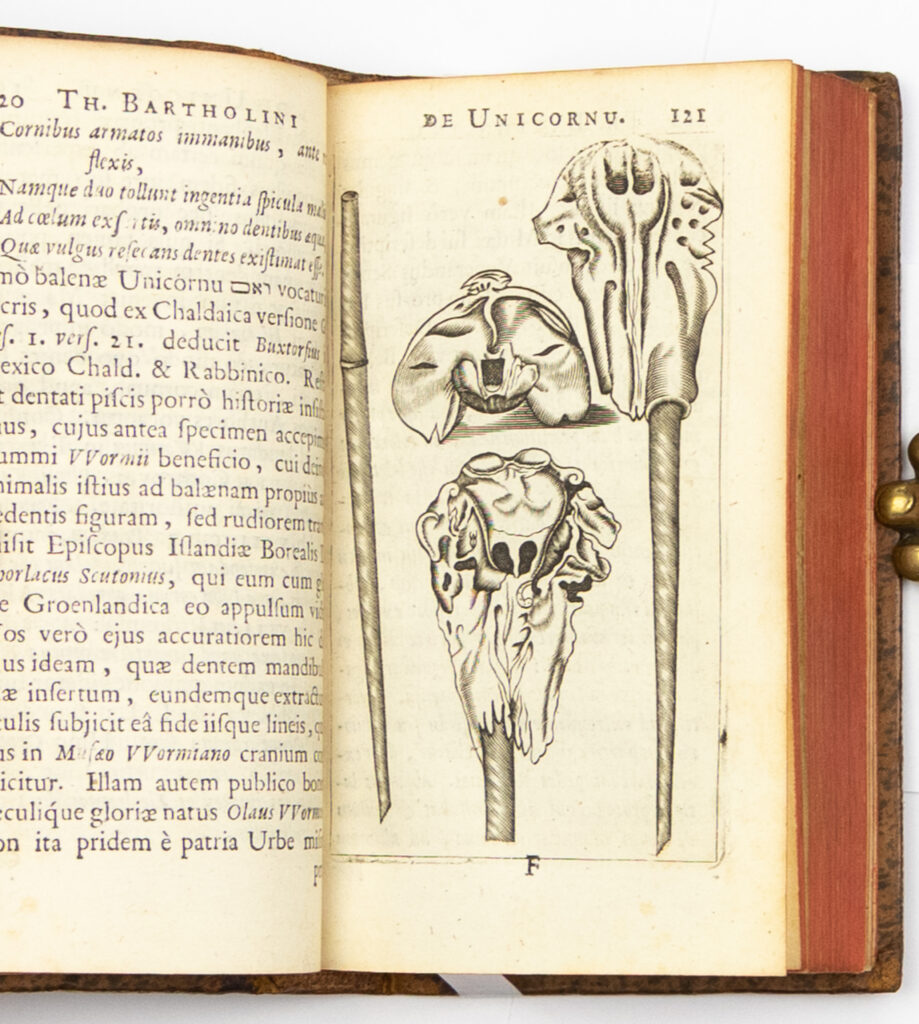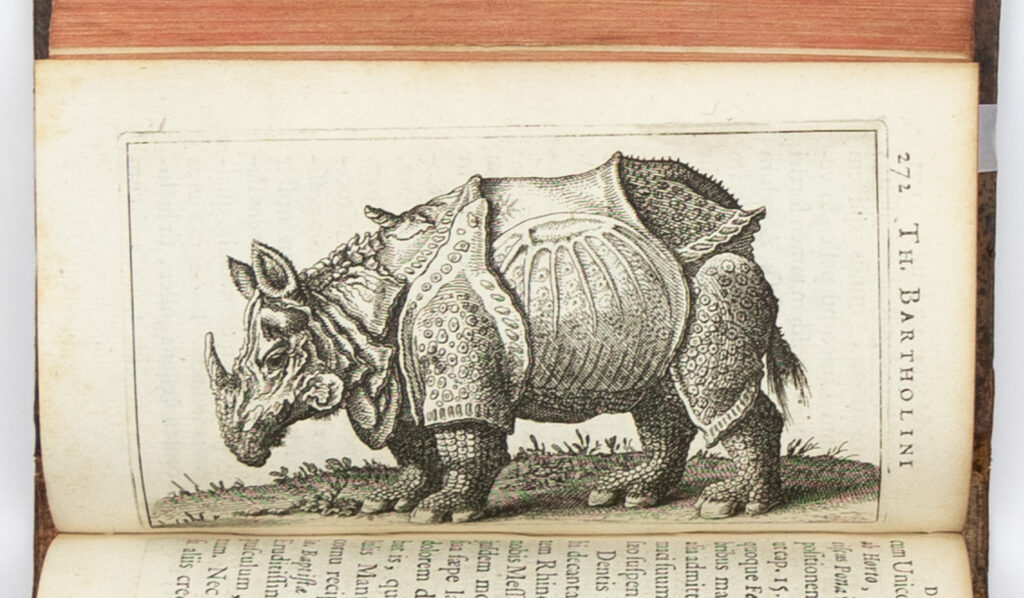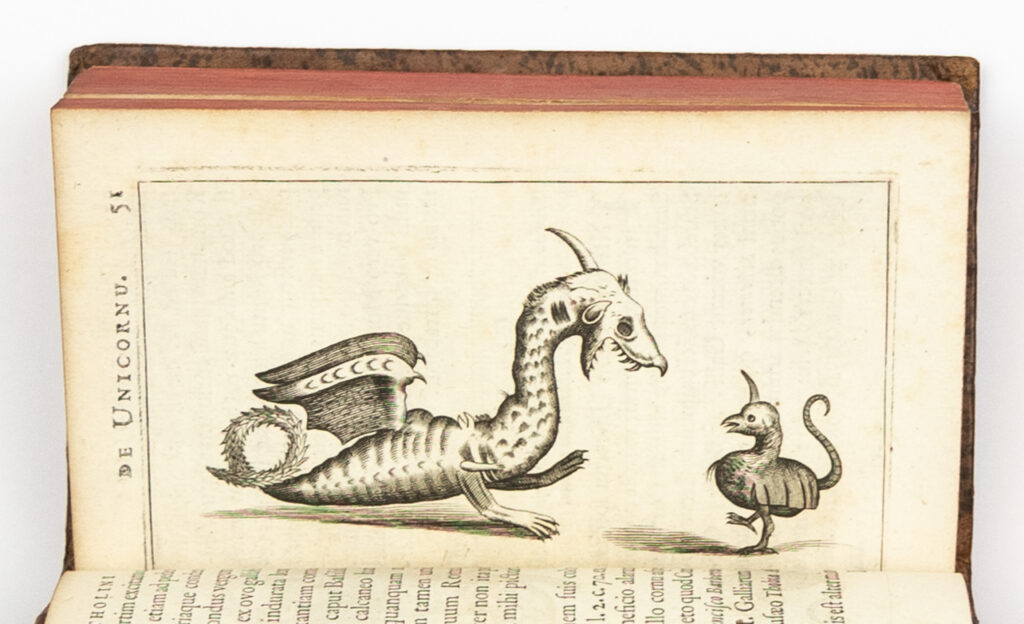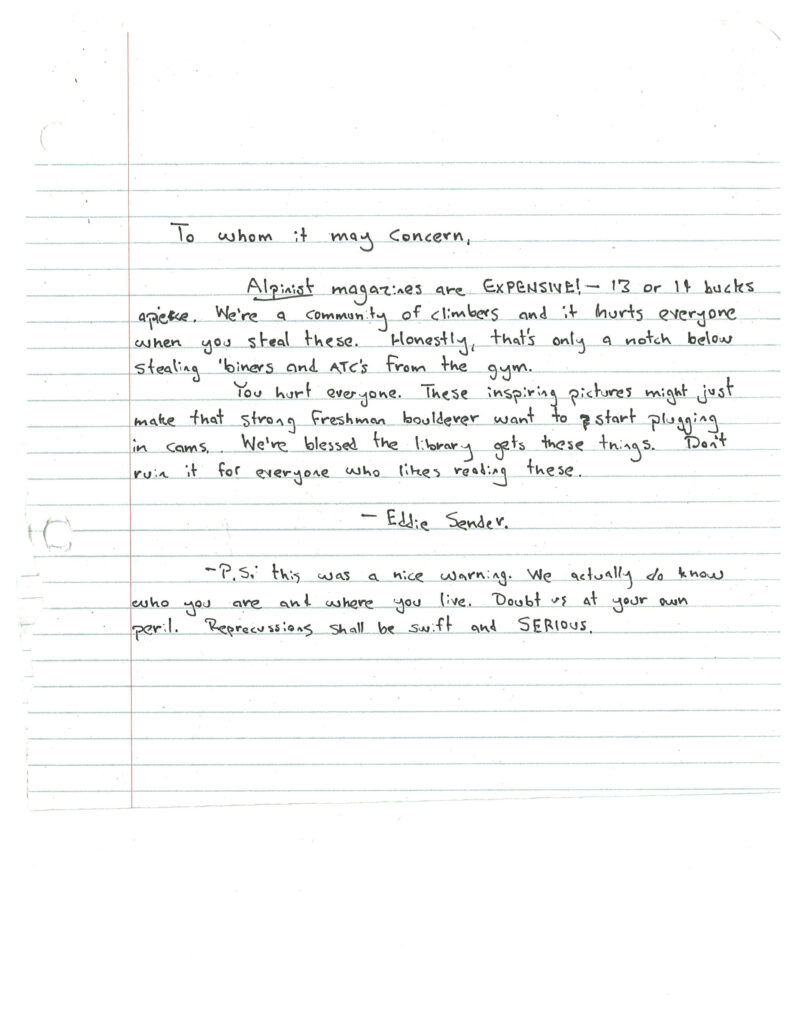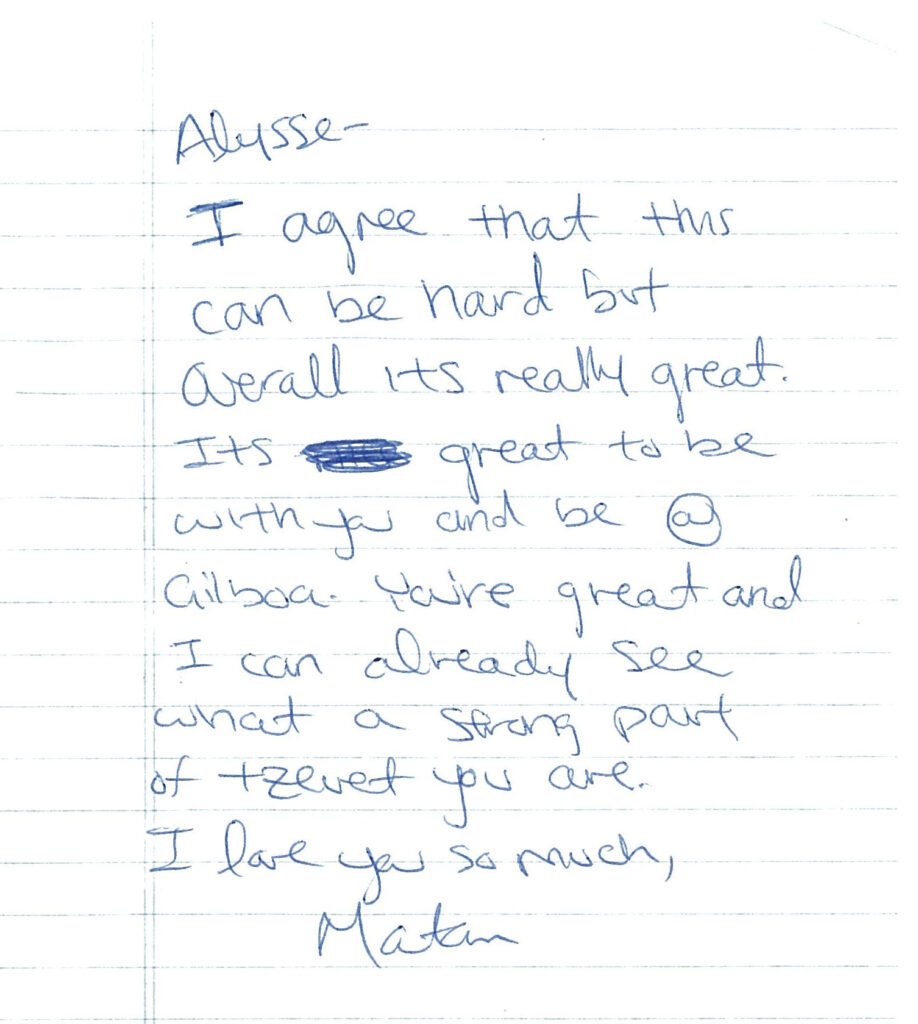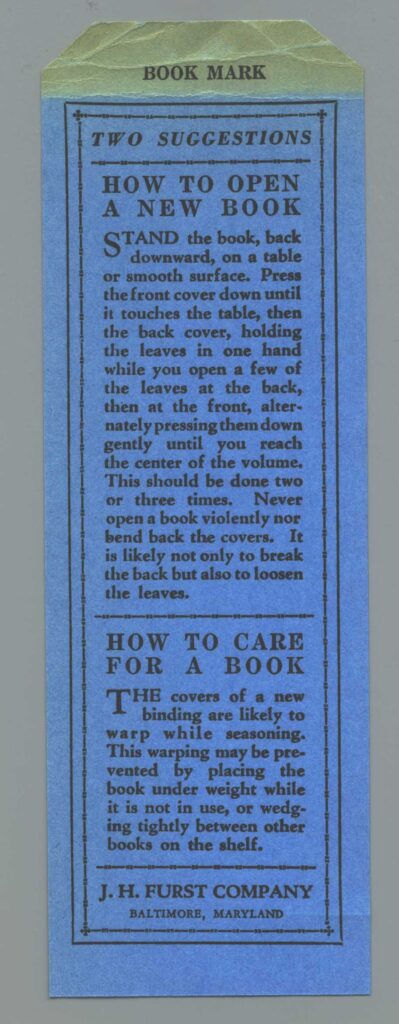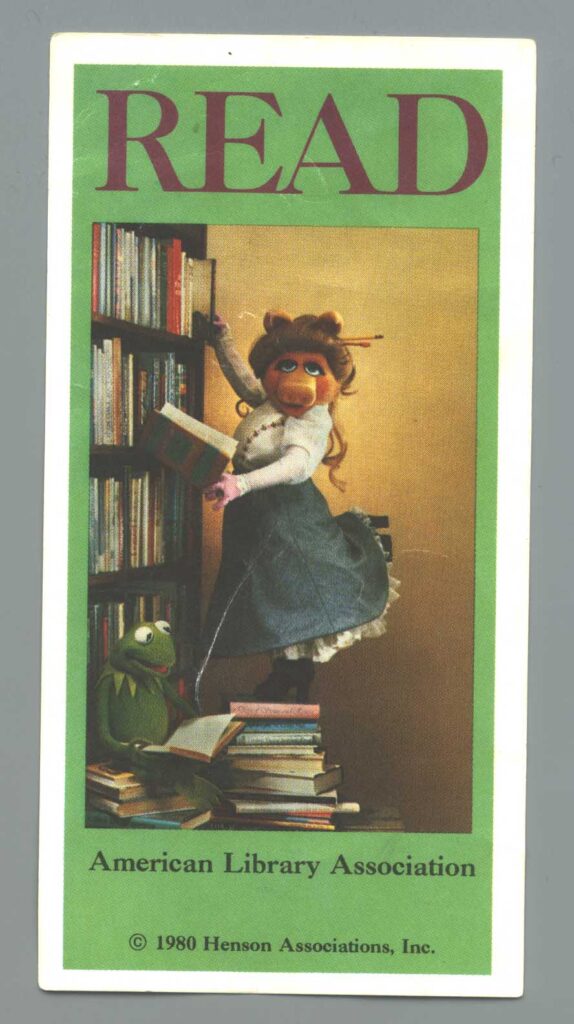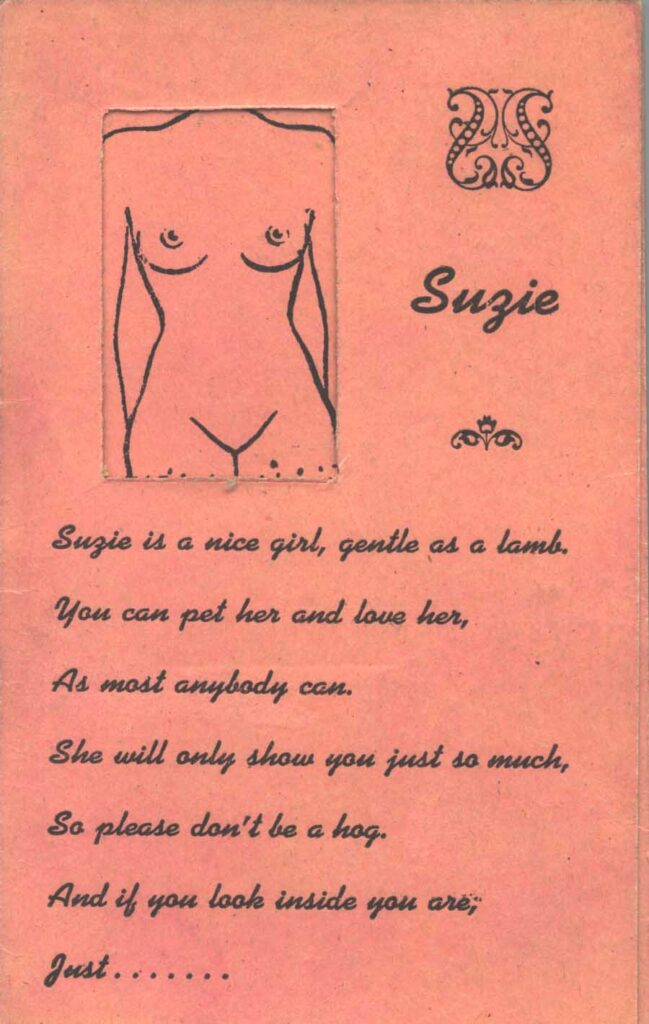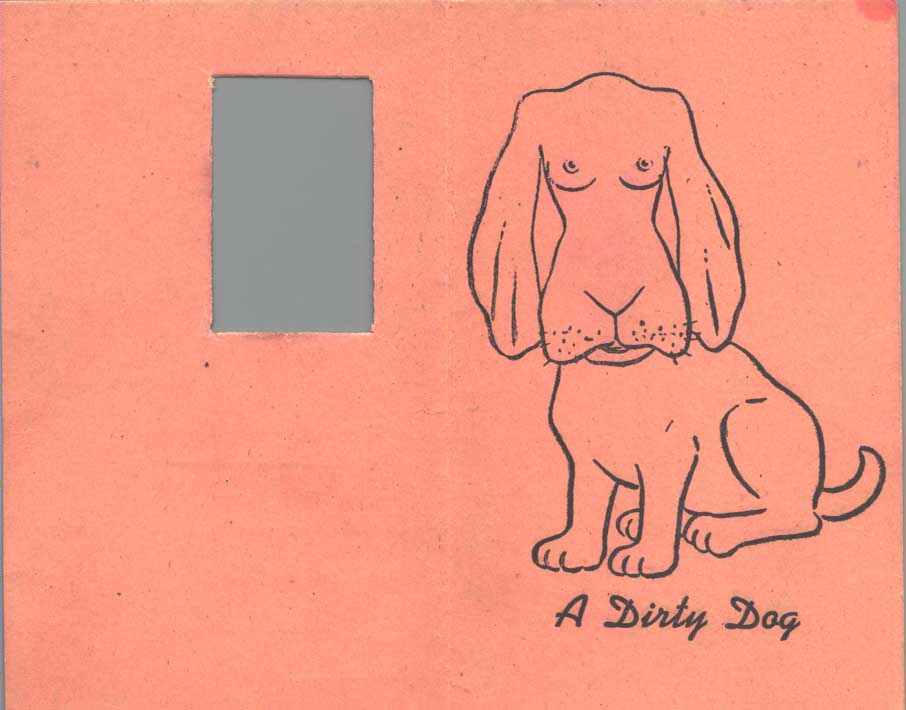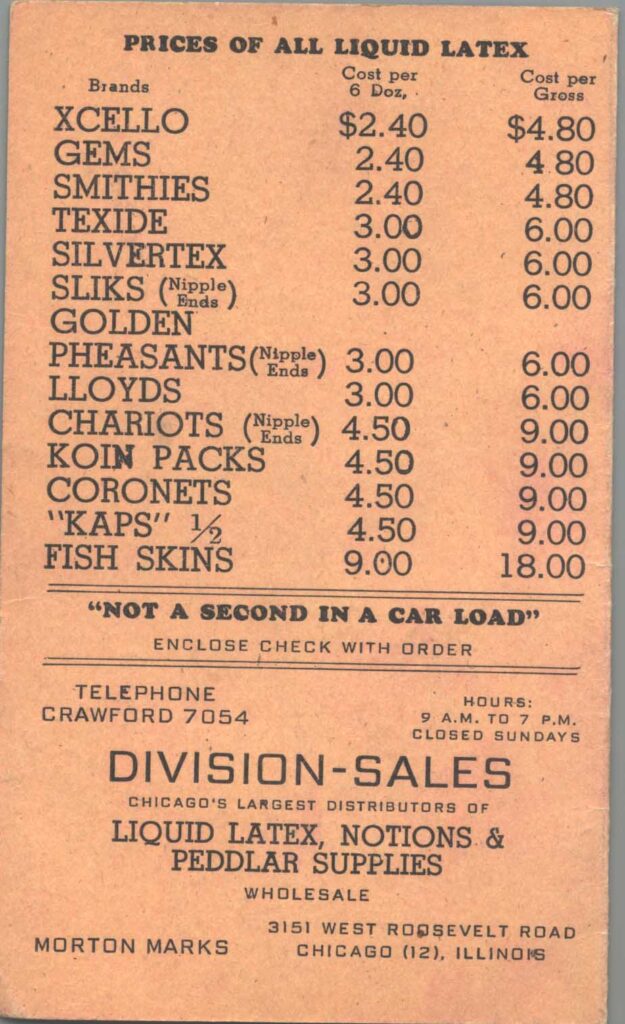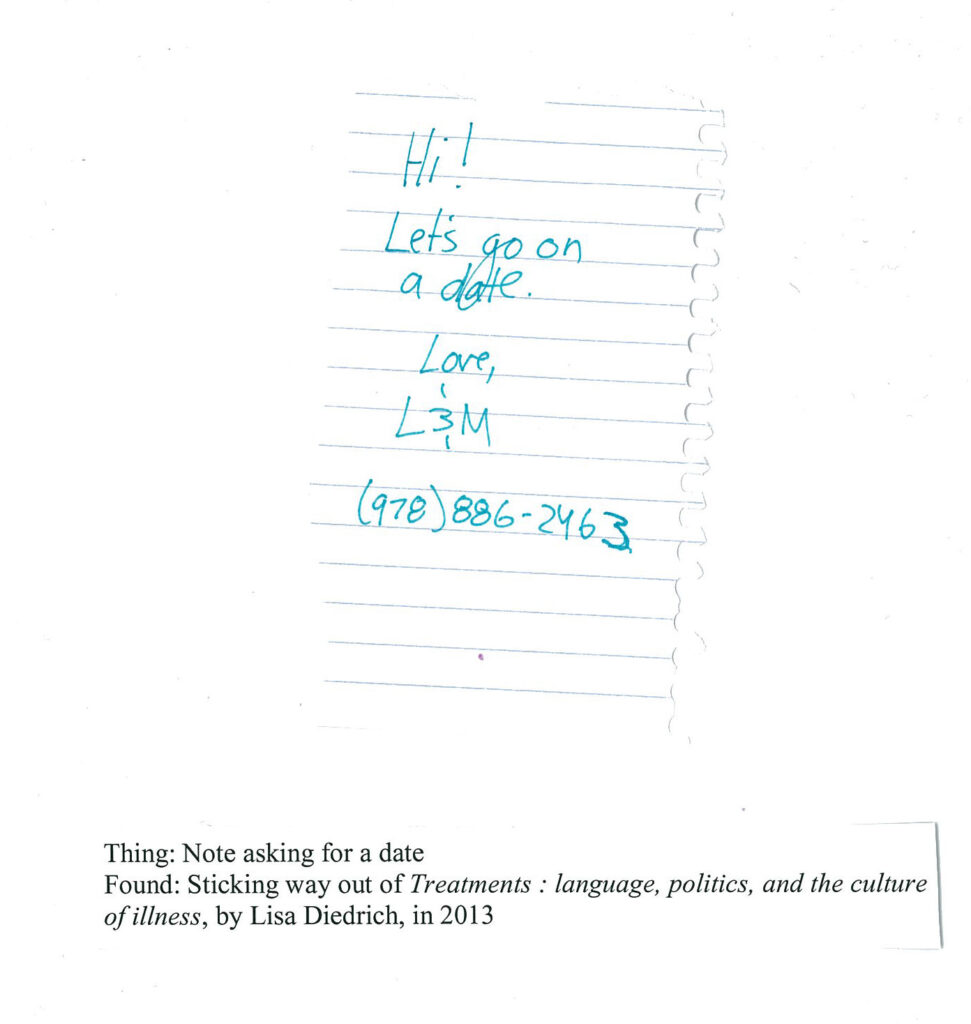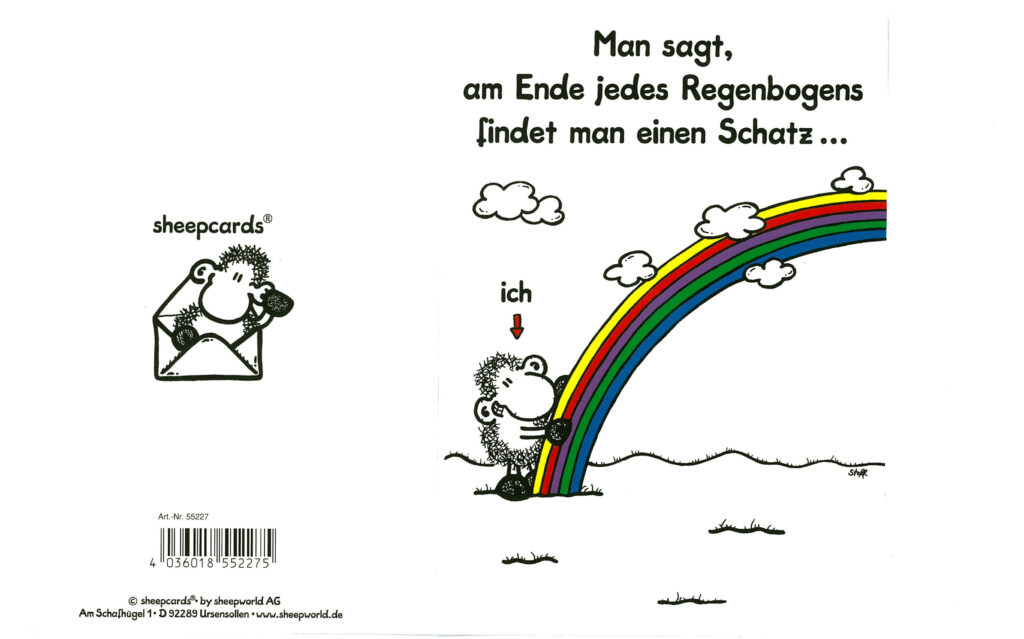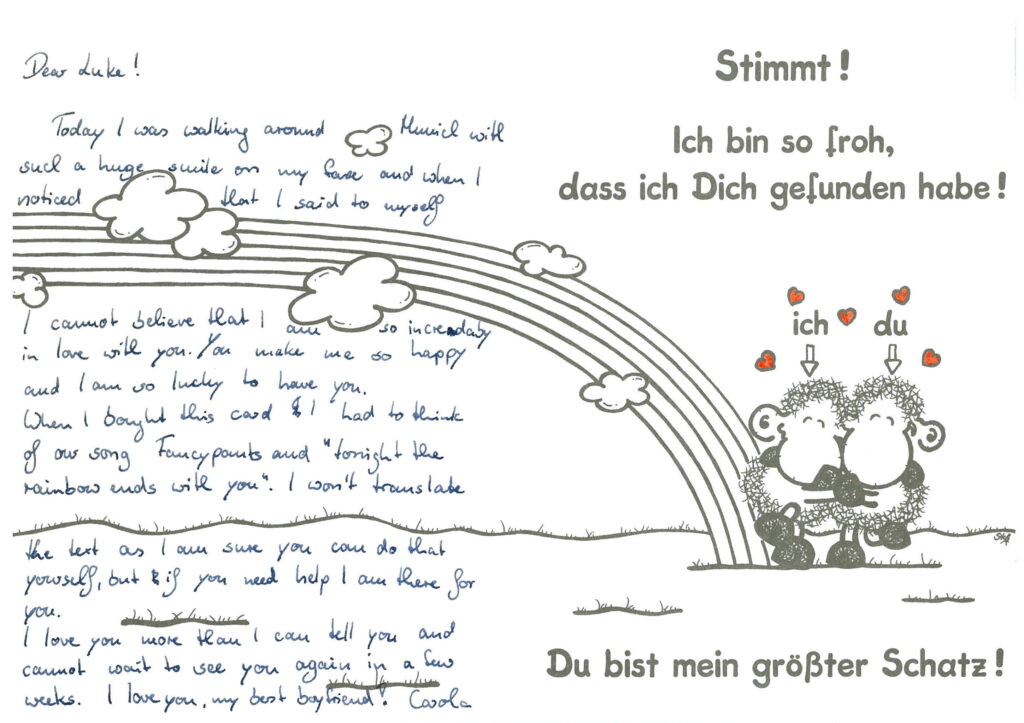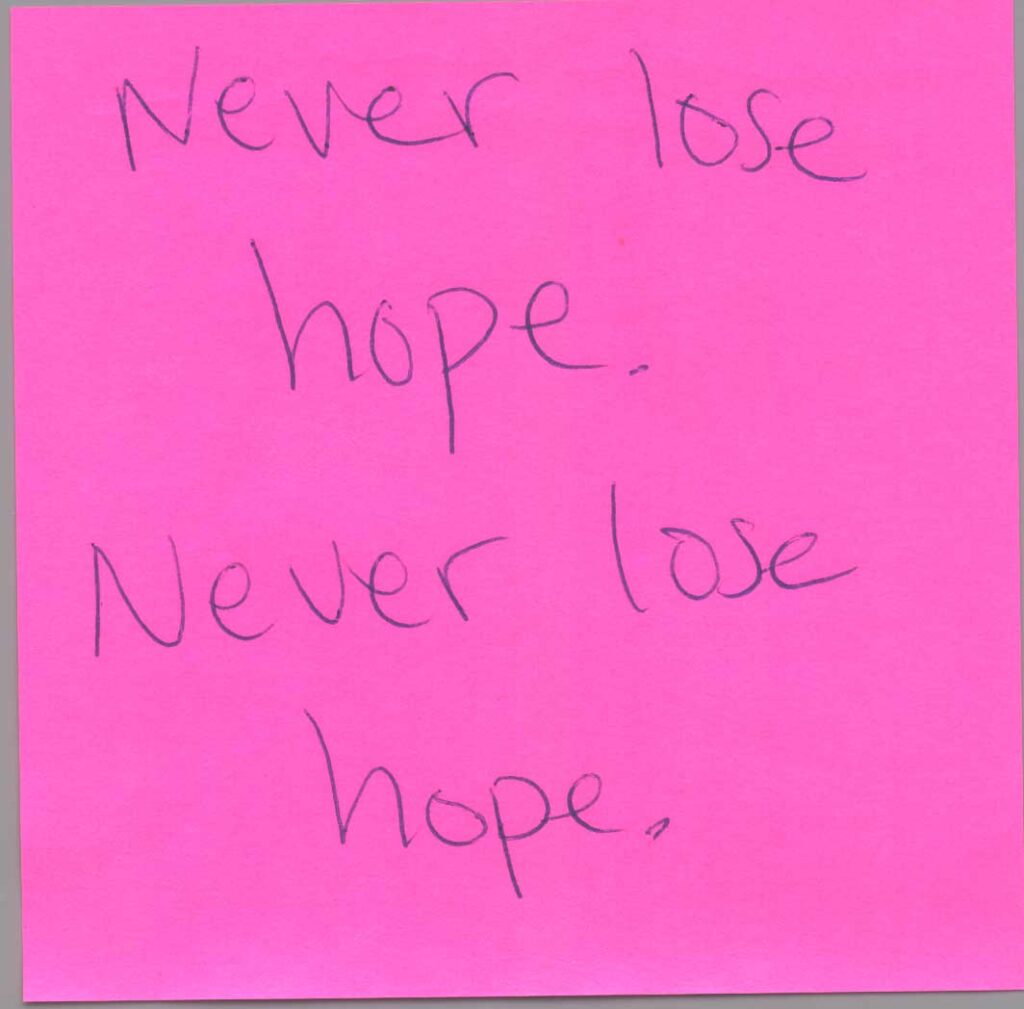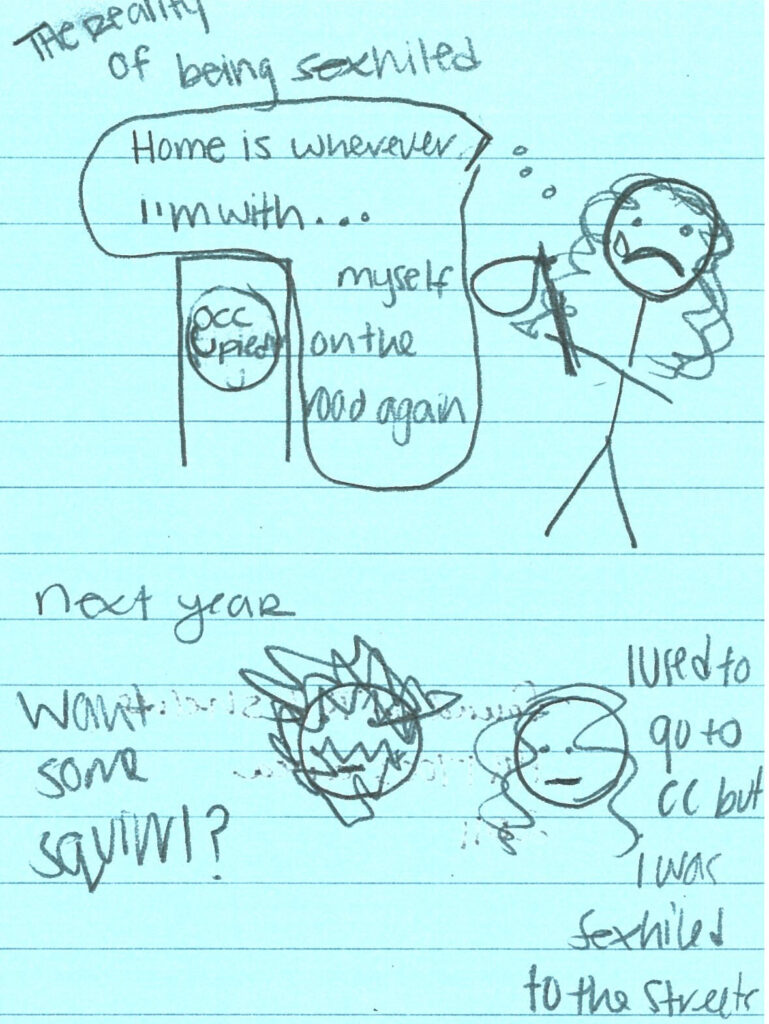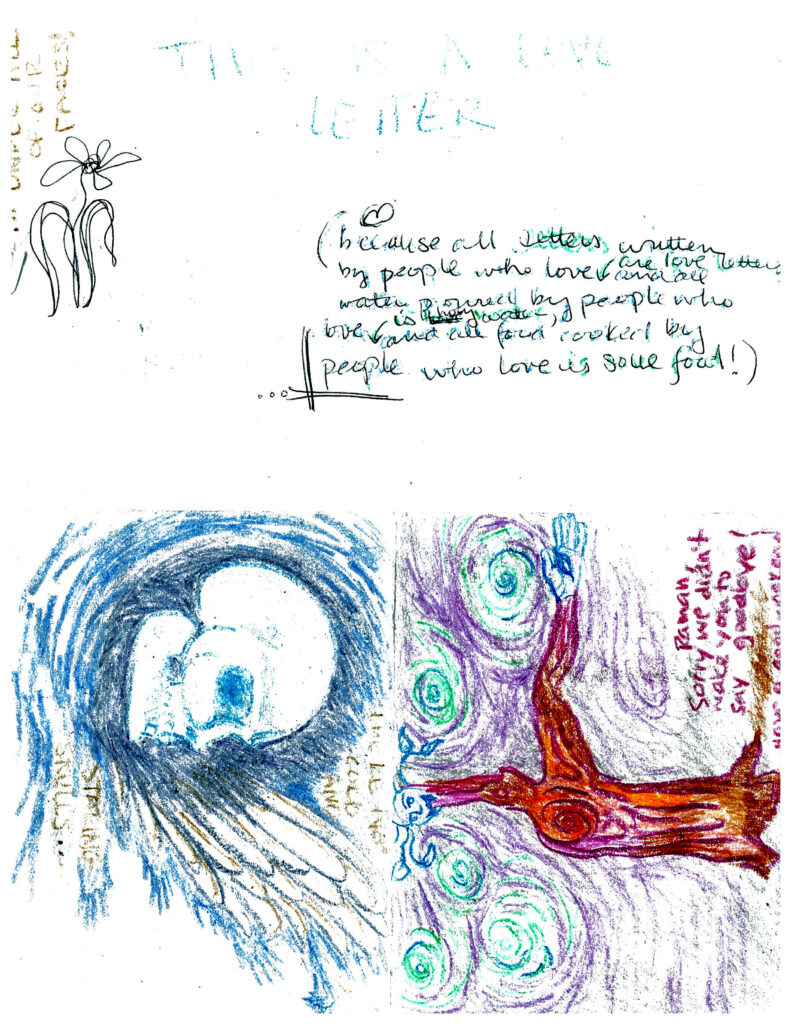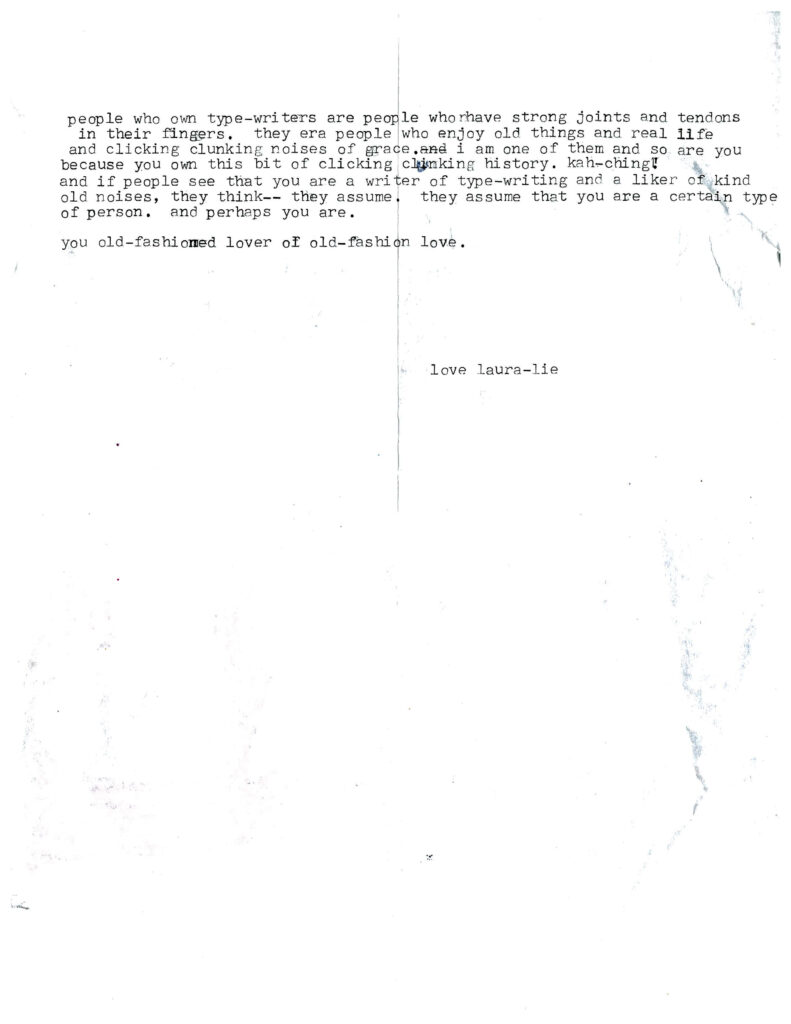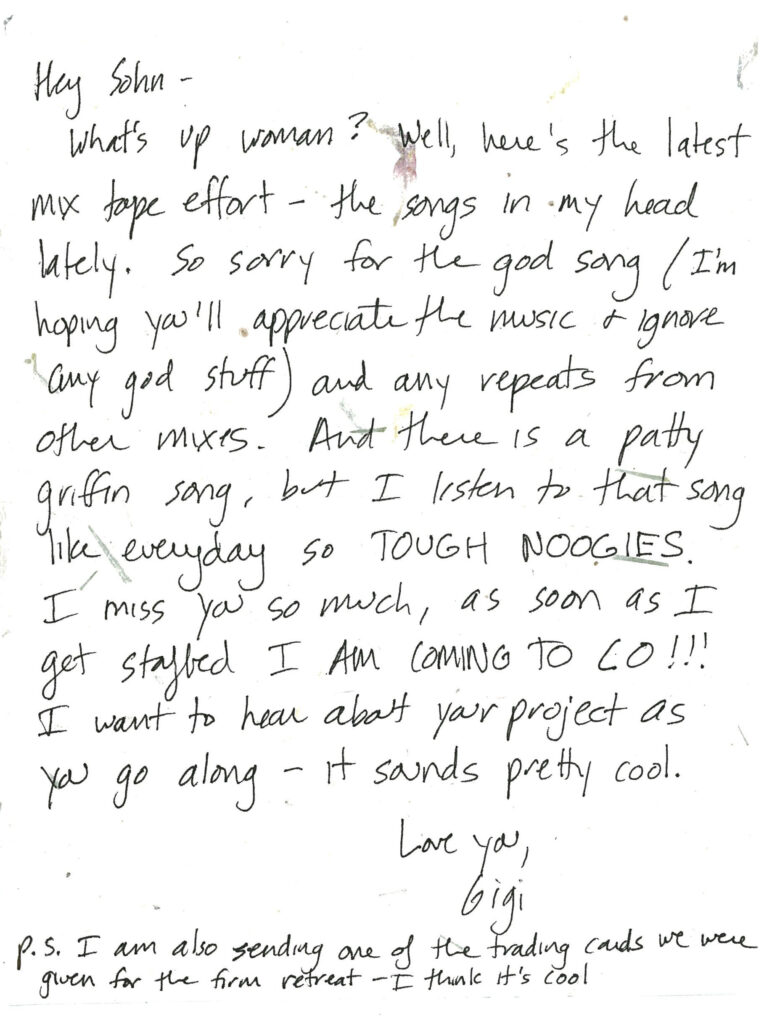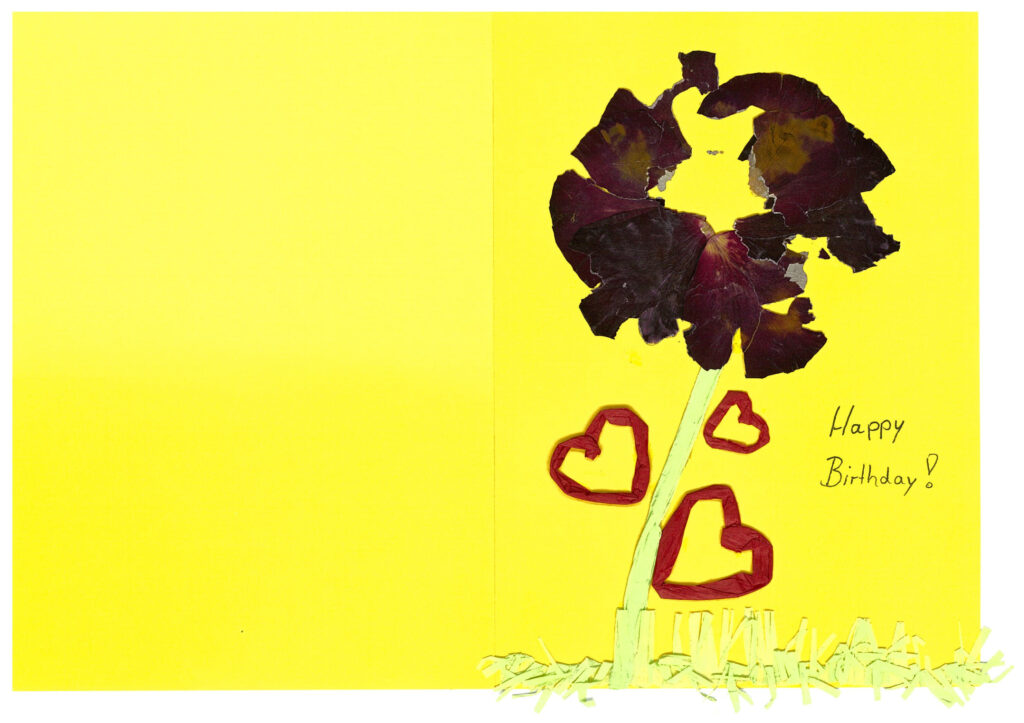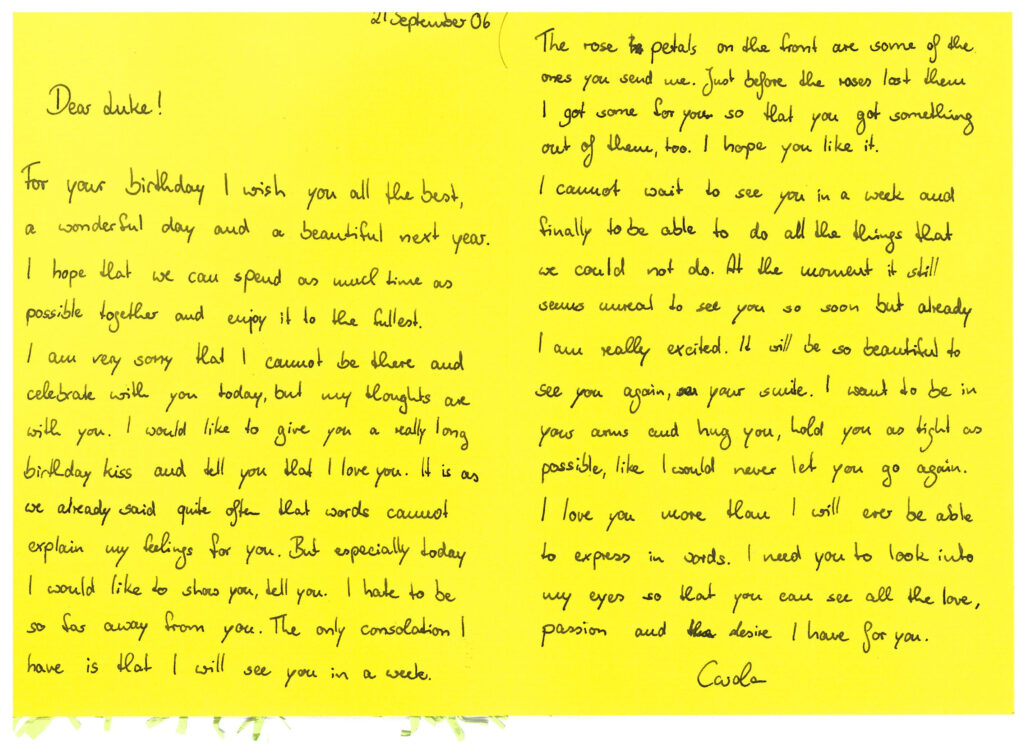A nice article about The History and Future of the Book today in the October issue of Rare Book Hub. Thank you, Susan Halas!
Bartholin’s observations on the unicorn
In August of 2024, just in time to share the book with Carol Neel’s First Year Foundations class “The Animal-Human Boundary” (also known informally, by us at least, as “beasts and monsters”), Special Collections purchased a 1678 book on unicorns:
Bartholin, Thomas (1616-1680). De Unicornu Observationes Novae. Amsterdam: H. Wetstenius, 1678.
This is the first illustrated edition (a version without pictures was published in 1645), so even if, like most people in 1678 (and today), you don’t read Latin, you can still enjoy this book. We thank the seller, Paul M. Dowling of Liber Antiqus, for providing these images.
.jpg?mode=max&w=1)
The Edward Worth Library in Dublin, Ireland, provides a useful overview of unicorn theory here, and Google Books has digitized versions both the 1645 and 1678 editions.
Dorothy Mierow sketchbook
Dorothy Mierow (1920-2000) was the daughter of CC president Charles Mierow. She served as Curator of the CC Museum from 1956 to 1962, and then was part of the first Peace Corps group to travel to Nepal. She is the author of several books, including Thirty Years in Pokhara, This Beautiful Nepal, and Himalayan Birds and Flowers. We have a collection of her papers, Ms 383.
Just look at these pages from her 1973 sketchbook. Just look at them!
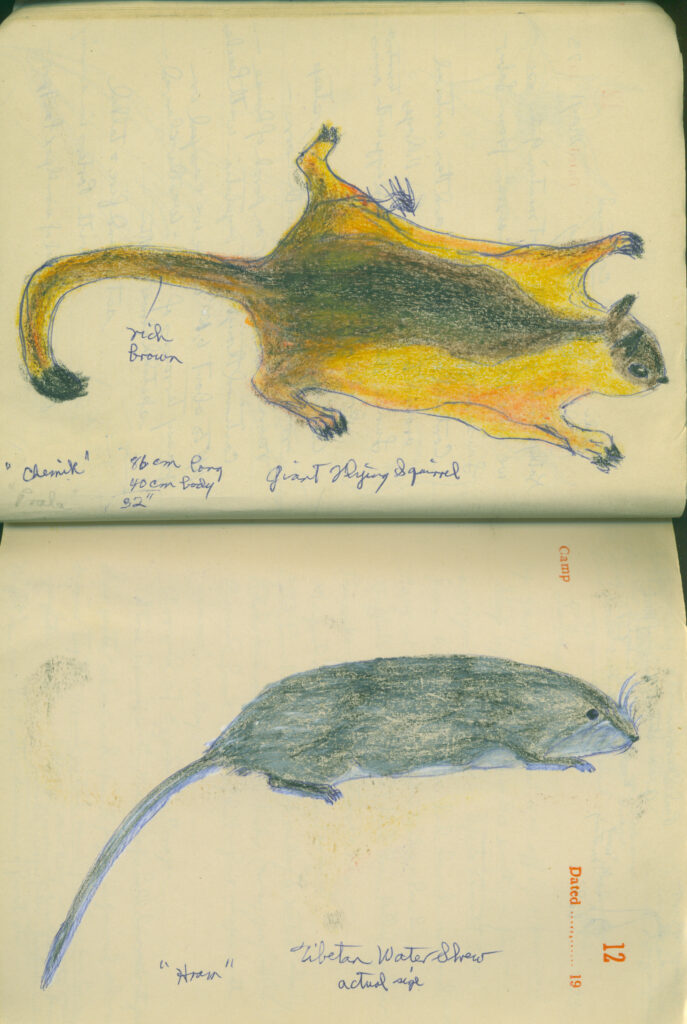
CC students rallying for peace in 1962
by Clare Trissel Davis, Colorado College Project Archivist
As Archivist for the three-year grant-funded History of CC Project, I have had the opportunity to unearth important protest stories from our institutional memory. The Office of the Dean of Faculty records that I’ve acquired from the basement of Armstrong include information about a student group called Commitment, assembled on campus in the early 60s, that opposed nuclear armament. Pictured below are students from Commitment attending a peace rally in Washington D.C. on February 16, 1962.

In its statement of purpose, Commitment claimed that “as young people living under the threat of nuclear war, we are deeply concerned for the survival of civilization. We are not protesting our armed forces, but we seriously question the moral and practical value of nuclear arms as a means of deterring war and securing peace. We are campaigning for Life, not only for ourselves, but for all Beings which possess this gift.” The group sought to challenge the Springs community to accept responsibility for “supporting alternatives to the arms race” and hosted three follow-up meetings to the College’s 1962 Symposium: “War or Peace in the Sixties: The Issue of Survival in the Nuclear Age” including a talk by Dr. Glenn Snyder on “Deterrence and Defense in Nato Strategy.”
Both Dean Lloyd E. Worner and President Louis T. Benezet supported the group. Benezet acknowledged that some of the 15 “idealistic” students on campus were the brightest and most talented in the student body. Though the group was heckled and challenged by other students on campus, the administration defended the legitimacy of their perspective.
to “THE” or not to “THE”
As College Archivist, I frequently get questions about whether or not there should be a “The” in front of “Colorado College.” I think the answer is no.
Colorado College is and was Colorado College, without a “The.” We began as Colorado College (no “The”) in 1874. College mailings from that period do not use “The.” The earliest college seal, used on the cover of the 1905 CC course catalog, has no “The.”
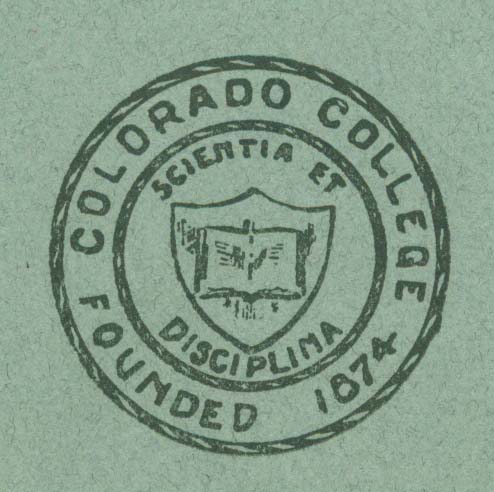
From the 1960s through about 2010, CC sometimes used a “The” in front of its name, but not consistently. In the CC course catalog, we find “The” in 1963-1964, but not before, and it’s in 2010-2011, but not after. Even within a particular catalog, use of “The” is not consistent. Many CC catalogs for this period have “Colorado College” on the cover and “The Colorado College” on the title page, and text throughout any particular catalog will sometimes have “The” and sometimes not.
From 1989-1998, CC’s official logo included the “The.” Before that, CC didn’t have an official logo; after that, our logos have no “The.”

For more information, see Colorado College Information File “Colorado College – Emblem, Seal, Motto, Insignia, Logo, Graphic Images, Mascot, Yells, Cheers, Chants, Colors, Letterhead, Stationery, Signage, Swag” in Special Collections. (As you can tell, you’ll find a lot of other fun stuff in that file, too.)
LGBT History ?
Special Collections recently purchased a “Colorado Homesteaders” photograph album containing this intriguing image dated 1924.
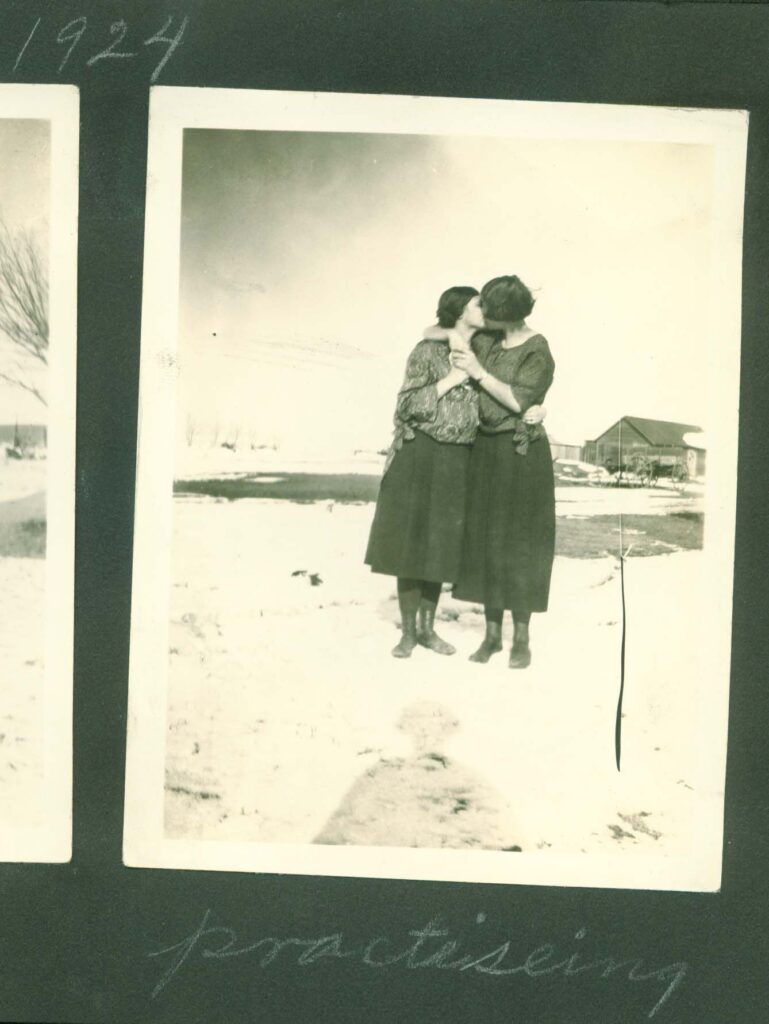
The photo is labeled “practiseing” (practicing) and shows two women kissing.
We don’t know their names or anything about them. We don’t know who labeled the photo. We have so many questions. This is what it is to study LGBTQ+ / gay / lesbian / queer history / herstory / theirstory / ourstory.
The album is not yet cataloged, but researchers are welcome to view it in Special Collections — just ask for the “Colorado Homesteaders” album.
Chinese students at CC
Guest post by Hongli Zeng, CC class of 2024.
Today, with approximately 20 students per class, Chinese students make up the largest international student community at Colorado College. Their story dates back to as early as the late 1910s.
In the summer of 2022, CC History Major Hongli Zeng conducted primary-source research with the abundant archives provided by the Special Collection. By looking at documents ranging from the Colorado College Yearbook (Pikes Peak Nugget), the college newspaper (The Tiger, now named The Catalyst), Registrar records, local gazetteers, and personal memoirs, the research attempts to reconstruct details of the lived experience of this special community on campus a hundred years ago.
A total of ten students were enrolled at Colorado College in the academic year 1923-1924, making the “largest Oriental Club the city ever had”.
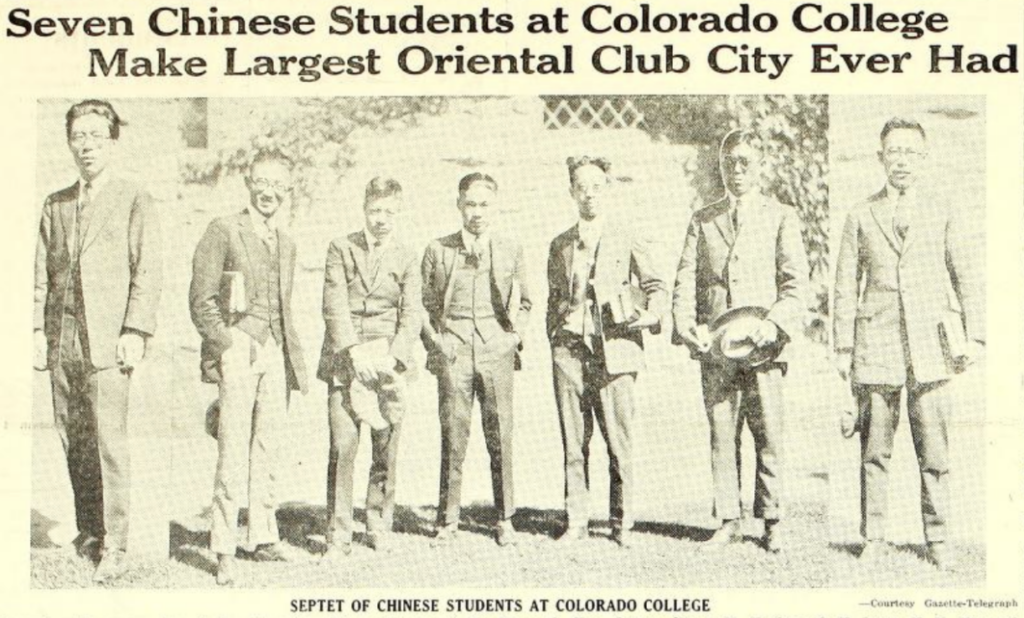
Recipients of the Boxer Indemnity Scholarship facilitated by both the American and Chinese governments, those students were welcomed by both the college and community in Colorado Springs with hospitality and curiosity. Chinese students were often invited to give speeches addressing the cultural mutual understanding of both countries. Occasional events such as “The Celebration of the founding of the Chinese Republic” and the Exhibition of Ancient Chinese Arts were also held on campus, attracting attentions from the President and students.
Some, however, also experienced unpleasant encounters of orientalism and racism, only a few decades after the enactment of the Chinese Exclusion Act in 1882 and the atrocity of Denver’s Anti-Chinese Riots in 1880. A centerpiece of this episode that highlighted tensions of Chinese students’ identity as racial minority on campus was probably the “poem debate” between an American student and their two Chinese classmates. With a “provocative” poem posted on The Tiger in March 1924 calling the Chinese “Chinee” and expressing despise for Chinese cultures, two Chinese students majoring in English literature and Arts respectively soon replied with poems that demonstrated not only their cultural pride but also extraordinary literary cultivation as non-native speakers.
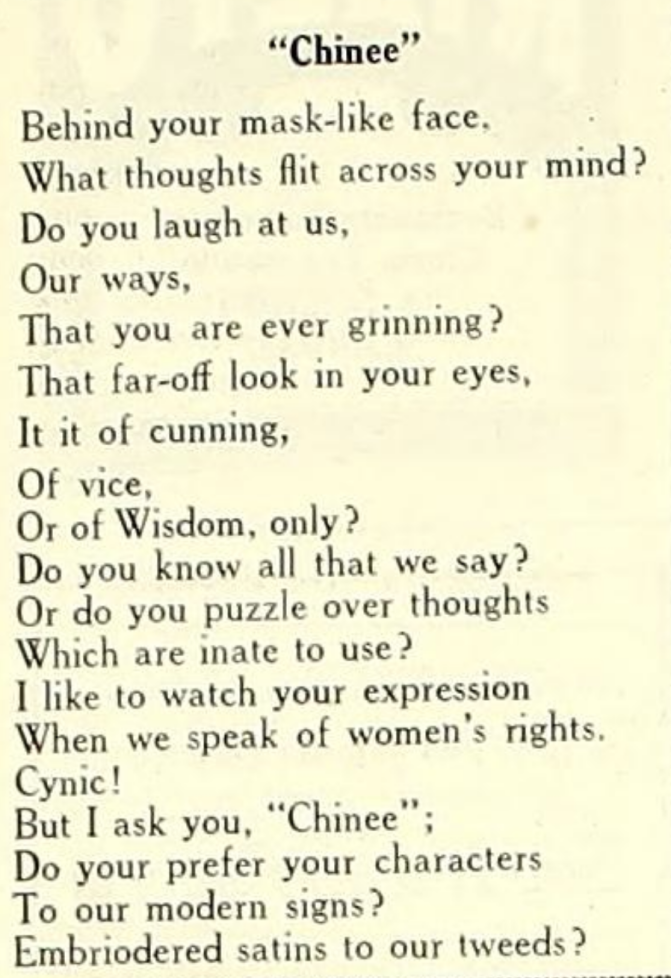
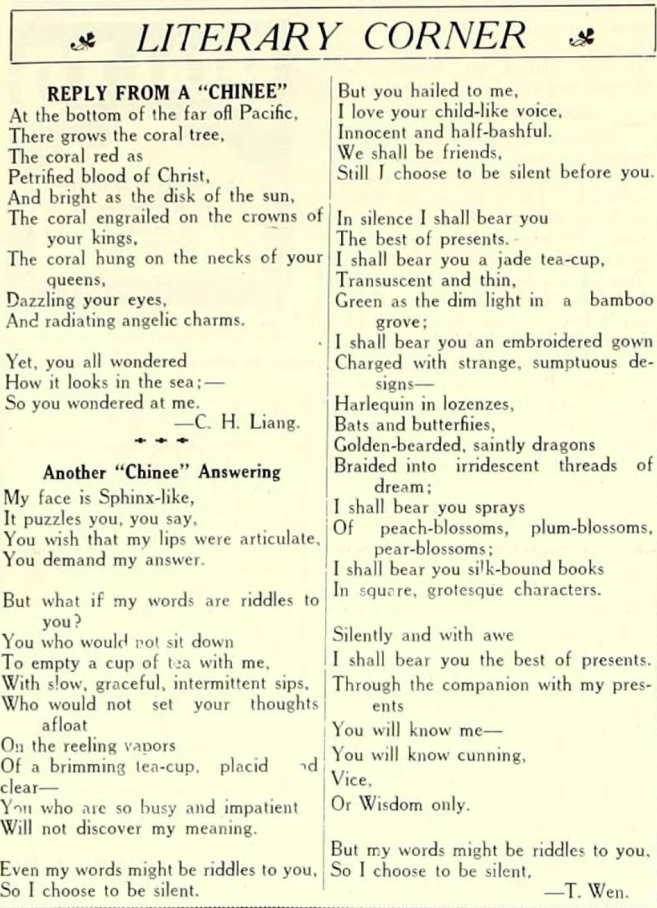
This dramatic anecdote was only tip of the iceberg of a more comprehensive image of the lived experience of the very first group of Chinese students in the history of CC. Their foreign-study journey started at Colorado College, but didn’t end here. Pursuing graduate degrees at the most prestigious institutions on the east coast including Harvard and Columbia University, many of them became well accomplished in their respective fields in later lives. That American student who wrote a rather childish poem probably didn’t expect replies from two Chinese peers who would later stand on the list of the most influential Chinese literates and intellectuals of the 20th century, one who single-handedly translated the complete works of Shakespeare into Chinese and another remembered today for his unbounded patriotism and leftist romanticism in both poem and politics.
A more detailed research paper on this subject is now available in Special Collection for public view (in Colorado College Information Files, Students – Chinese). If you are interested in discussing this topic further with the researcher, feel free to reach out to h_zeng@coloradocollege.edu.
things found in books
In 2012, Noel Black got interested in a special collection at Colorado College Special Collections: things found in books at the CC library over many years. His KRCC Big Something piece on the subject is no longer online, but we still have the images he used. Here they are!
a thief, not a donor
[This post is reprinted from a now-defunct blog in May of 2013.]
It’s not often that library work involves crime of any kind, but this week we had a research question with a crime-related answer. I’ve changed the name of the perpetrator to protect his privacy.
First, the back story: from approximately 1903-1977, Colorado College had a small museum in Palmer Hall (now our social sciences building). Its collections included fossils, pottery, stuffed animals, and more. When the museum closed, the materials were dispersed to the Denver Museum of Nature and Science and elsewhere. (The blue whale skeleton from the CC Museum, pictured below ca. 1920, now hangs in the Denver Museum.)
Recently, a Denver Museum staff member contacted me with some questions about a name she’d found associated with a box of items from the CC Museum. There were a number of named collections in the CC Museum, including the Lang-Bixby Collection, the Corwin Collection, and others. But this name — let’s say it was Dontrustim — was one I hadn’t heard before.
We checked through our files on the history of the museum and discovered that Dontrustim was indeed associated with certain materials from the CC Museum. Why? Because he stole them, creating the short-lived “Dontrustim Collection.”
James M. Dontrustim majored in art history and graduated from Colorado College in 1970. He was an honors student and won a prestigious fellowship as a senior. He worked with rare books and manuscripts at the CC library and also as a part-time guard at the Colorado Springs Fine Arts Center, the local art museum.
In 1972, he was charged with stealing more than $10,000 worth of art objects from the Fine Arts Center and the CC library. Most of the Fine Arts Center items were there on long-term loan from CC. Dontrustim pleaded guilty, saying he had no intention of selling the objects: according to an article in the Colorado Springs Sun on May 16, 1972, he intended to study the objects, catalog them, and use them “to beautify his apartment.”
It took us a while to figure out this mystery, because our file on the CC Museum is thick and the top sheet of stapled pages on Dontrustim misspelled his name slightly as — let’s say — Dontressim. But our excellent student assistant spotted the similarity and found a list of about 100 items Dontrustim stole. Some were small, easy to hide under a sweater: a Babylonian clay tablet, a carved stone scarab. Others would have been more difficult to smuggle out of the museum: a prehistoric Anasazi ladle, a pair of Plains Indians leggings, a double-headed steel spear.
How did he do it? How did he get caught? Did he feel bad about it later? These are mysteries we’ll never solve. But we can tell our Denver Museum researcher not to call Dontrustim a “donor.” The items in the Dontrustim Collection may have been in James M. Dontrustim’s possession for a brief while, but he didn’t donate them; rather, the police recovered them from Dontrustim’s apartment after his arrest and returned them to the museum.
exciting new acquisition
Tutt Library received an exciting new acquisition today, the “Ark of the Covenant,”
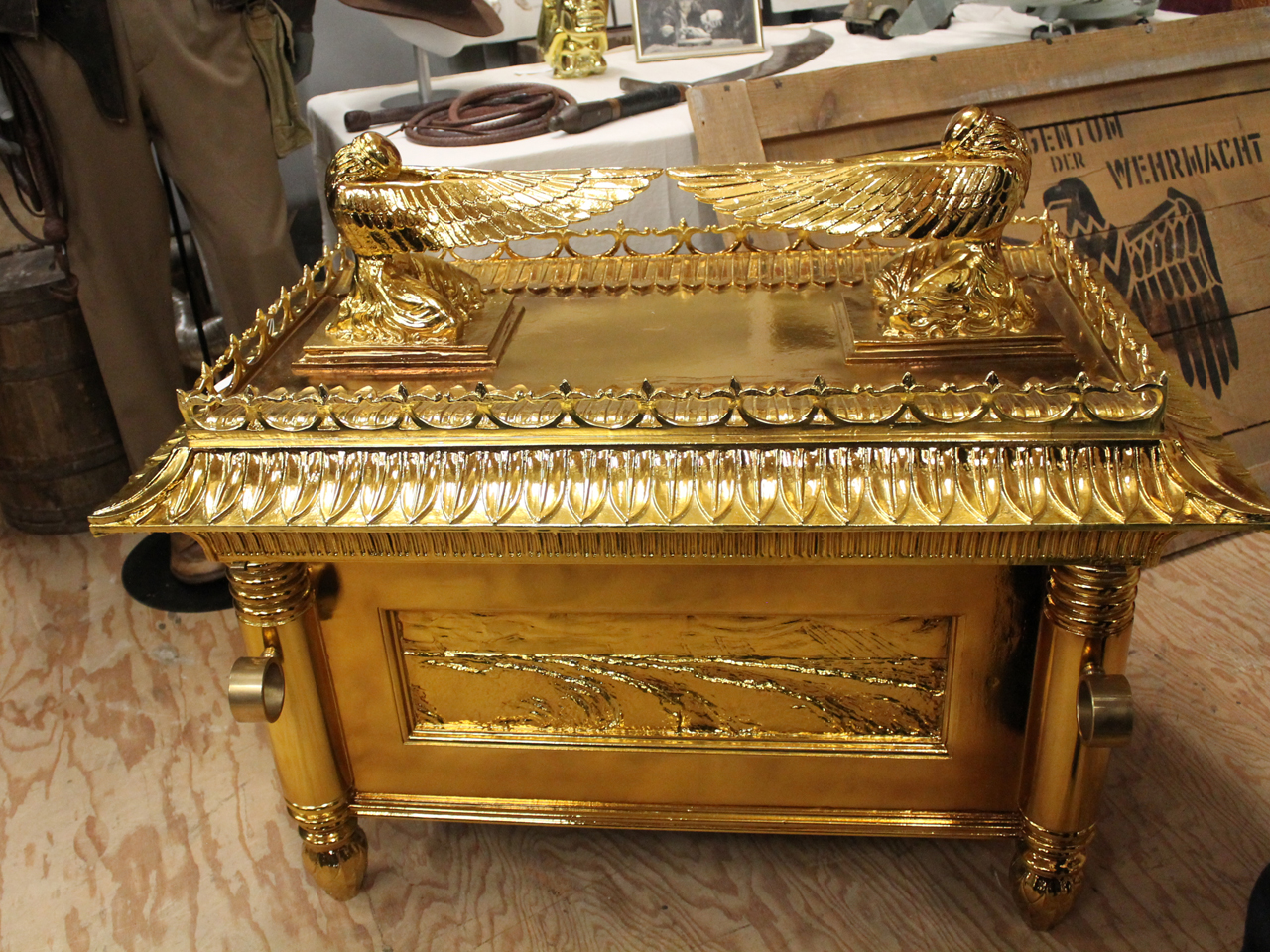
an important Christian Judeo-Christian relic worthy of research by Top Men. Who? Top Men. Here’s a video of the new acquisition being stored in the Special Collections vault.
We are sorry to inform researchers, however, that pipe smoking is against Special Collections policy. Even top men will be asked not to smoke in the reading room.

